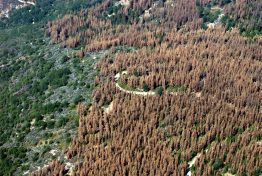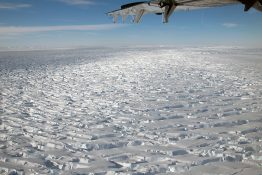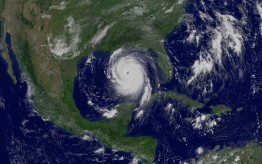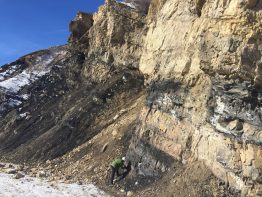Large swaths of U.S. forests are vulnerable to drought, forest fires and disease. Many local impacts of forest loss are well known: drier soils, stronger winds, increased erosion, and loss of shade and habitat. But if a whole forest disappears, new research shows, this has ricocheting effects in the atmosphere that can affect vegetation on the other side of the country.
Read more at UW Today »UW researchers will survey Antarctica’s Thwaites Glacier as part of major international effort
The National Science Foundation and the U.K.’s Natural Environmental Research Council this month announced a joint 5-year, $25 million effort to study Antarctica’s Thwaites Glacier. Nicknamed the “world’s most dangerous glacier,” Thwaites Glacier already is contributing to rising seas; if it collapsed it would raise global sea level by about three feet. The glacier may also act as a linchpin on the whole West Antarctic Ice Sheet, which could raise sea level by much more.
Read more at UW Today »Civil War-era U.S. Navy ships’ logs to be explored for climate data, maritime history
A new grant will let a University of Washington-based project add a new fleet to its quest to learn more about past climate from the records of long-gone mariners. The UW is among the winners of the 2017 “Digitizing Hidden Special Collections and Archives” awards, announced Jan. 4 by the Washington, D.C.-based Council on Library and Information Resources. The new $482,018 grant to the UW, the U.S.
Read more at UW Today »Q&A: UW’s Shuyi Chen on hurricane science, forecasting and the 2017 hurricane season
The United States just suffered the most intense hurricane season in more than a decade, and possibly the costliest ever. Hurricane Harvey hit Houston in mid-August. Hurricane Irma struck Florida in early September, followed just two weeks later by Hurricane Maria in Puerto Rico and the Caribbean. Now, with the close of hurricane season on Nov. 30, new UW faculty member Shuyi Chen, professor in the UW’s Department of Atmospheric Sciences and an expert on hurricanes, answered a few questions about the state of hurricane forecasting and the 2017 storm season.
Read the Q&A at UW Today »Less life: Limited phosphorus recycling suppressed early Earth’s biosphere
The amount of biomass — life — in Earth’s ancient oceans may have been limited due to low recycling of the key nutrient phosphorus, according to new research by the University of Washington and the University of St. Andrews in Scotland. The research, published online Nov. 22 in the journal Science Advances, also comments on the role of volcanism in supporting Earth’s early biosphere — and may even apply to the search for life on other worlds.
Read more at UW Today »





